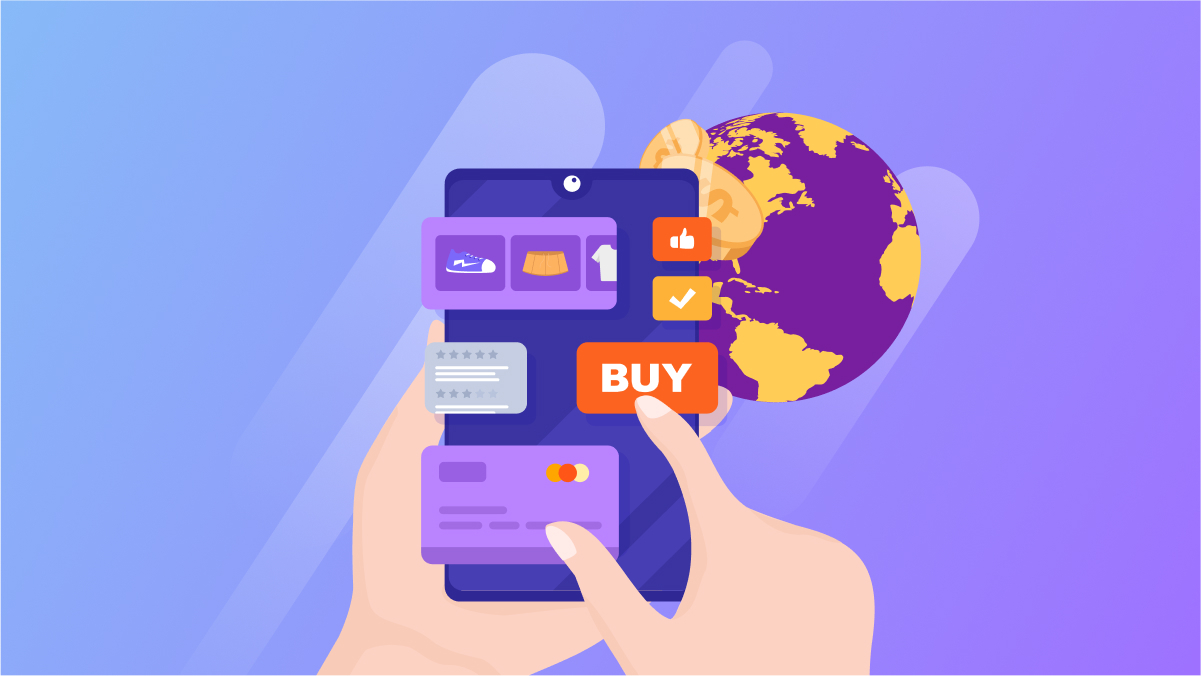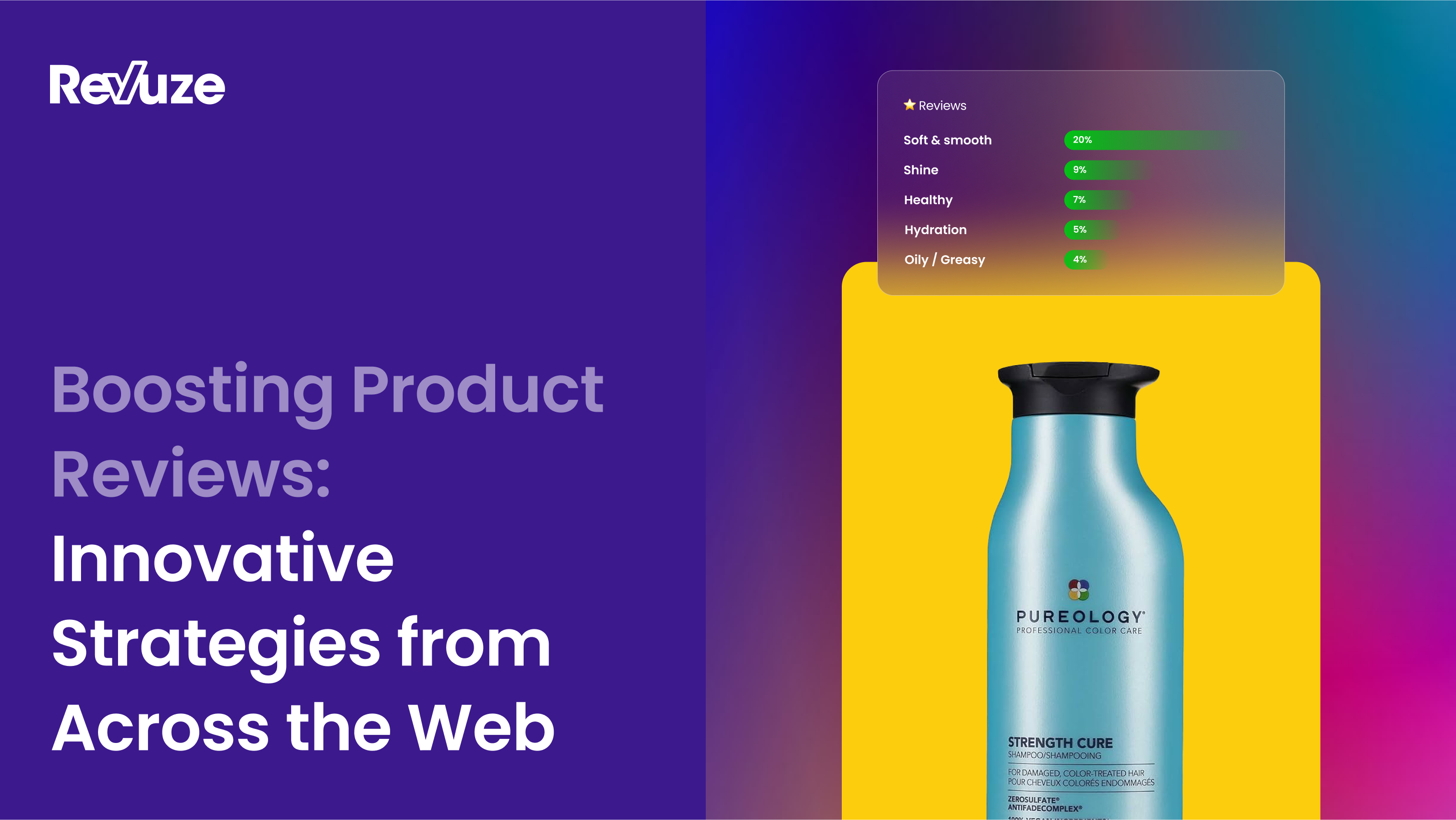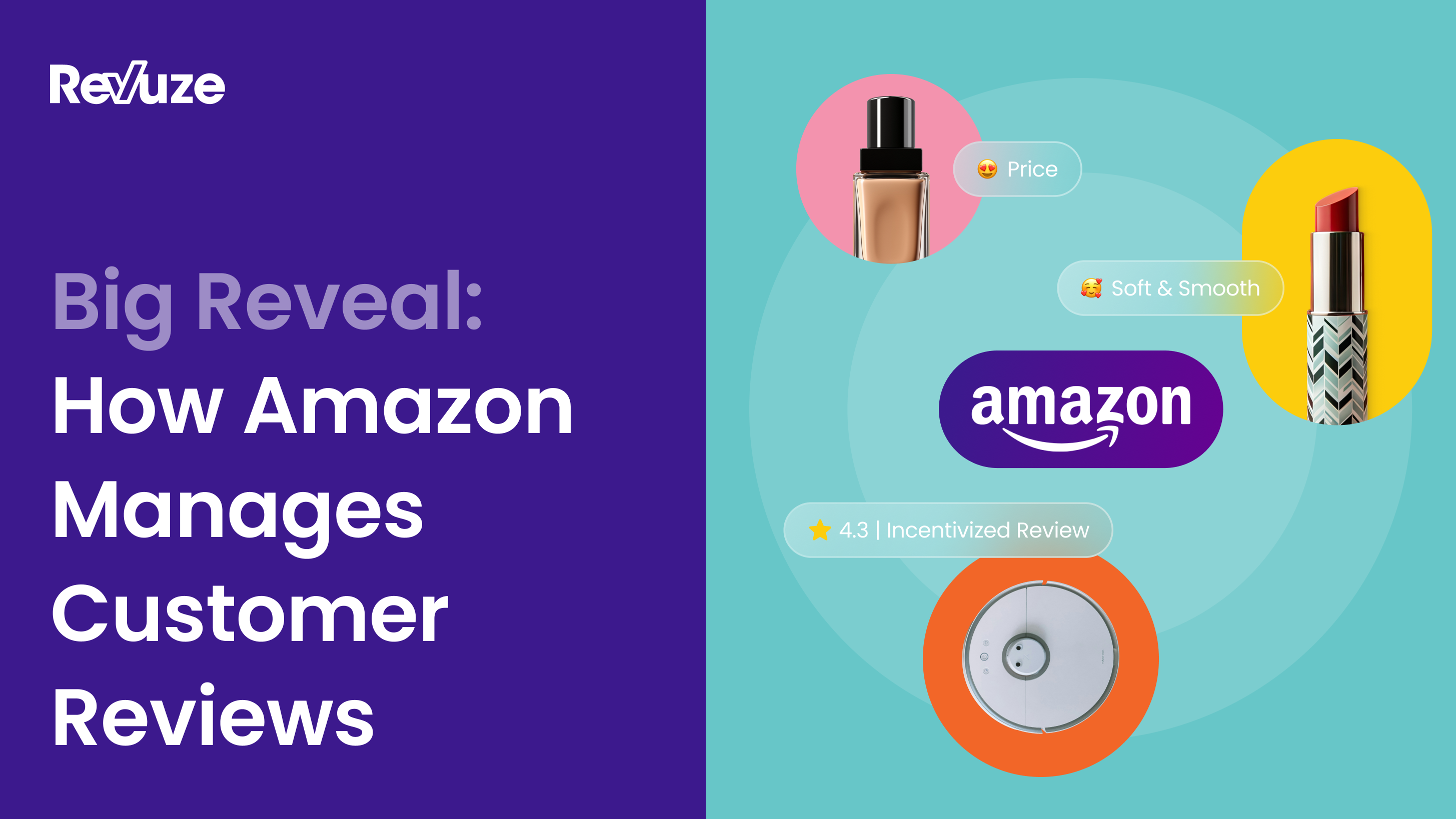
5 Ways to Improve Ecommerce Customer Experience in a Post-COVID World
The COVID-19 pandemic completely transformed the way our society works. Suddenly, almost overnight in some cases, people went from crowded trains and bumping elbows in stores to having to stay away from each other for their own safety.
And when people couldn’t get into physical stores, more and more turned into online shopping. This change has happened swiftly, and many retailers were caught off guard, scrambling to make the necessary adjustments, resulting in a mixed ecommerce customer experience when visitors attend their virtual shops.
This isn’t a passing trend, and shoppers are taking a liking to shopping online. Businesses have to up their game and find creative ways to improve their ecommerce customer experience if they want to generate new sales and retain existing customers.
Luckily, it’s a goal that can be achieved.
Read on to find out how to provide your customers with the best ecommerce customer experience possible.
But first things first.
What is the ecommerce customer experience?
As opposed to User Experience (UX), the Ecommerece Customer Experience (a.k.a ECX) focuses less on the technical and functional aspects of the experience and more so on the overall feeling.
It starts from the customer’s first touchpoint with your brand and accompanies them every step of the way – before they purchase anything, and some would say until the end of time.
In every one of these steps, thoughts and emotions arise. Together, they’ll dictate engagement, conversions, and retention. All of these tie into the broad term of ecommerce customer experience that shapes how customers interact with your brand.
It’s understandable why it’s such a big deal. And the data backs it up, with 73% of respondents mentioning customer experience as an essential factor in their purchasing decisions.
Yet businesses aren’t prioritizing it, as only 49% say companies provide a good customer experience.
There’s a clear gap here and a fantastic opportunity for you to differentiate your brand by providing an excellent ecommerce customer experience that will increase customer loyalty and generate new ones.
How COVID changed ecommerce
2020 marked a noticeable shift in many aspects. Ecommerce was no exception to the rule, with the impact of the pandemic being felt far and wide throughout the market.
Thanks to being based digitally, ecommerce was able to dodge most of the changes that crushed other forms of trade and, in fact, only increased in market share during this time period, with it hitting 30% of overall UK commerce during the lockdown periods.
When such a massive behavior change occurs over a very short time span, it means systems are being thrown off balance.
Let’s review how the digital market rearranged itself to better understand how to provide shoppers with a better ecommerece customer experience.
Increased demand
With consumers unable to enter their local brick-and-mortar stores, whether due to restrictions or simply not having the time, they tend to switch to online forms of purchase. This is especially true of the younger, more tech-savvy generations, though older consumers also got in on the action.

In response to this, plenty of retailers upped their delivery game. Curbside pickups, increased number of delivery vehicles, and more flexible means of delivery were heavily emphasized, with ready-to-ship stock also favored.
Wider customer bases
As mentioned above, the number of those using e-commerce increased over the course of the pandemic and its subsequent restrictions. Something that also increased was the range of consumers using e-commerce.
It’s a common stereotype for those in the older generations to not know how to use new forms of technology. When a new form of technology is introduced, and you’ve grown up and lived without it, you can often carry on and get by just fine without ever learning to use it.
This isn’t the case in the middle of a global pandemic, especially one to which older people were considered more vulnerable. Whether it’s the elderly learning to use the internet or their children doing it on their behalf, the audience for online purchases definitely got wider as time went on.

The switch to pure ecommerce and the demand for interactivity
With the ratio of ecommerce to walk-in stores rising, many businesses found that it was actually more efficient and cost-effective to switch to a pure ecommerce approach than continue using brick-and-mortar stores.
Change is never easy, and though consumers weren’t likely to make the switch themselves simply due to habits, the pandemic was the perfect time to showcase the advantages of pure ecommerce.
The technology used in ecommerce also leaped. Virtual showcases, more detailed descriptions, and even interactive forms of media such as 3D models became widely used to improve the ecommerce customer experience.
Consumers like to try before they buy, a fact that has kept traditional retail stores afloat, but in the age where technology has become so advanced that you have ways of doing that from your living room, there’s very little need for them.
For example, Australian accessory company Bellroy leaves nothing to the imagination, showing potential customers what their wallets would look like.


Furniture companies employ 3D models that allow you to examine your new comfy chair from every angle to replicate the retail customer experience.

With the shift to online forms of communication, the demand for quick answers and information has shot up.
If you have questions about a product or service, asking in-store has traditionally been the go-to method of obtaining information. With restrictions in place and limited numbers of stores allowing full face-to-face contact, those who ask these questions have had no choice but to turn to online methods of communication.
Fast responses and clarity are the main concerns. If communication is slow and confusing, customers will likely shop with another provider who will answer their questions if a clear and quick answer isn’t provided.
This leads me to my next point.
Willingness to switch brands
Customer loyalty declined during the pandemic, especially in pure ecommerce stores.
When you’re walking down the street or through a shopping center, it’s not easy to find the motivation to browse alternate stores when the one you usually go to is lacking.
You might settle for a different brand or a lower quality item instead of taking the time and effort to travel to another store. With ecommerce, that other store is merely a click away.
To keep potential customers in your virtual store, you must provide the best ecommerce customer experience possible.
Here are our top 5 ways to do that.
5 superb tactics to up your ecommerece customer experience game
Naturally, the shift in consumer behavior means you will have to switch approaches to running an ecommerce store if you want to satisfy them. This is especially true of customer experience since the lowered loyalty levels mean consumers will likely switch away from your business after having a single bad experience with you.
If you want to keep up with your CX game but are unsure where to start, don’t fear! We’ve analyzed five major changes that have seen success over the past few years and cataloged them below so you can understand what they are and how to start using them.
Building a community
You might think that building an online community is as simple as running social media pages for your brand, but it’s not entirely true. This view doesn’t take into account the nuances of what your audience wants and the values they hold.
Forming a community is less about your business and your products and more about how you shape these to meet the desires of the people you cater to – from Millennials and Gen Z all the way to baby boomers.
For example, the younger generations care deeply about sustainability, with more than 50% saying that sustainability is important when making purchase decisions.
These people have grown up seeing the effects of climate change and the impact of unsustainable business practices on the world around them. They are willing to pay a premium if it means purchasing from a sustainable source.
International shoe brand TOMS caters to this audience by putting sustainability and the community front and center on its website, with the help of informational videos and articles to educate shoppers.

Older consumers, on the other hand, have been shown to care more about things that affect their own health and comfort, including a focus on luxury items that emphasize relaxation and security above all else.
How to build your community
The first step is simple – you need to know your audience.
No matter how it is performed, all commerce is limited by what consumers are willing to pay for. This extends to your company, your values, and how the population sees them.
In business, there are no absolutes. You need to change your strategies, processes, and approaches when there is a shift in the priorities of the community you serve.
When building a community around a brand, the first area you look to is often more straightforward areas such as social media pages or forums, rather than the expensive and time-consuming process of overhauling your website. This will help you spread the word about who you are and what you do immediately and at a minimal cost.
A brand’s community is all about emotional context and familiarity. Consumers’ attention spans are shorter than ever, so try and keep your messaging short, simple, and easy to comprehend if you want to expand your community.
Those who have an emotional connection to your brand, and through that to each other, will reach out to you if you make it possible. These consumers are already willing to communicate with you and share their opinions and desires, you simply need to make it happen.
From there, regular engagement, affiliation programs, and creating community platforms where consumers can discuss your brand without your input are sensible next steps. Which of these is most effective and how you should approach them depends entirely on the individual brand in question.
Social media interactivity

Using social media isn’t just a case of engaging with customers and giving out information upon request; there are actually many facets to it. Four of the main components that can be utilized are:
- Social media listening: Using software to capture customer insights based on publicly shared information.
- Social media marketing: Outreach and brand awareness, traditionally thought of as advertisement and spreading information.
- Social media reputation management: Taking action on reviews or feedback left on social media, acknowledging customers’ difficulties and how you can solve them.
- Social media engagement: Talking to your customers directly when they have questions, solving issues that they have in a publicly viewable way.
Each factor brings new information and new ways of improving ecommerce CX to the table.
Social media listening can grant you access to information from posts that both are and aren’t directed at you. In contrast, social media marketing allows you to present new information and opportunities to your consumer base.
Social media engagement allows you to directly connect with your customers in a publicly viewable and easy-to-see way, both forming an emotional connection with them and allowing others to directly witness solutions to possible problems that they can utilize themselves.
Social media reputation management consists of responding to reviews or feedback that isn’t directly visible to the average viewer unless they’re looking for it.
Interact with customers in both public and private depending on their preferences. This allows you to go into more detail and have fewer limits imposed by platforms.
Two good examples of social media reputation management in action are FAQs or customer questions on product pages within social media. Questions can be responded to either directly on the page or in a DM to the customer in question.
A good case for publicizing the answer would be to solve a similar issue for others. On the other hand, answering in private can help save face and avoid any potential embarrassment that might arise from certain questions.
While social media listening & marketing can be done formulaically and on a schedule, the other two facets require active monitoring as they’re reactive rather than proactive.
How to get started with social media interactivity
To begin, you need a social media page. Once that’s set up, you should assign duties to your CX team based on each of the four above categories of interaction.
An automated service can do the listening part of social media listening. Later on, it’s recommended that a team member will sift through and analyze the data for actionable insights.
Social media marketing can mostly be done routinely. That said, you should always strive to keep your content fresh and interesting. Using the same templates and information repeatedly will lead to consumers scrolling past you as their brain filters out your posts.
In addition, you need to consider each social media platform’s unique rules and limitations and the audience that frequents them. Tailor your posts to each one rather than simply copy-pasting.
Twitter, for instance, limits your text, so placing some of the information in image form. This will both make the post more eye-catching and circumvents the character limit. The end result is a post that will gain and hold readers’ attention.
Social media reputation management and social media engagement are both far more unpredictable. Consider assigning a dedicated night owl to manage these aspects. Social media runs 24/7 and won’t stop just because it’s after 8 PM or a weekend.
Another factor to keep in mind is speed. Like a series of dominoes, posts can come one after another, leaving your reputation in ruins. The same dedicated team can spot fresh posts mentioning your brand, respond promptly and avoid any potential fallout.
Personalizing the ecommerce customer experience
The idea of a personalized shopping experience is nothing new, it stretches back to the oldest forms of commerce on record. It’s the idea that what customers are exposed to should be relevant to them.
This isn’t just a theoretical idea. A vast majority of customers expect a personalized shopping experience. And when they don’t get it, they get frustrated. You can guess what will happen next.
How to get started with personalization
Personalization can happen in any form of communication. On your web pages, emails, SMS messages, and more. You just need a platform that can accomplish this magic and a wealth of data.
Here are some of my favorite ways to tackle personalization:
- Localized content: language, interests, and region-specific information. Check out this example from Paul Valentine, as it recognizes the customer’s geo-location and sends them to the relevant region.


- Recommended products: in side/banner adverts, suggested products, and email promotions. I’m sure most of you have received a “We thought you might also like” email filled with products that complement the one you just purchased.
- Targeted discounts: relevant products in emails, pop-up promotions, and bundles.
- Navigation adjustment/dynamic layouts: adjustment of website or app navigation functions and layouts based on the previous interactions a customer has had with you.
Dynamic supply chain planning
With the increase in online shopping, ecommerce demand and turnover have remained high even with COVID-19 restrictions being a thing of the past in most countries.
Those consumers who entered ecommerce during the pandemic largely did so as a replacement for in-store purchases. They demand instant processing and same-day dispatch where possible. They treat a website exactly like a brick-and-mortar store – a place to find answers and obtain products immediately.
This is complicated by the fact that the pandemic disrupted supply chains all over the world. Ships were stuck in port, flights were grounded, and vans were told not to start. While the gears of global supply have started turning again, various global factors have left it in less than optimal condition.
And this dramatically affects the ecommerce customer experience.
Fortunately, there are several factors you can plan for that allow you to make up for most bumps in the road when it comes to your supply chains.
The first step is to assume that there will be problems you cannot predict or fix yourself, as that’s true of any dynamic involving two or more parties. Once you’ve accepted that, you can begin looking at your supply chains and predicting what obstacles might crop up in your path, then start planning how to avoid them.
How to get started with supply chain alternatives

There are several things you can do to up your supply management game, all of which involve the use of technology to some extent.
Fear not, for during the course of 2020-2021, alterations were made to supply chain management (SCM) software, and most of the bumps have already been determined and accounted for by the experts.
- Finding local alternatives to international materials/goods. With international trade being among the most disrupted, finding local alternatives to goods that you usually purchase from abroad is a must. This ensures that supply chain disruption is minimized and nets points with consumers who love to shop locally.
- Factoring in scarcity. One of the main issues facing manufacturing in the current times is a shortage of rare materials and goods, either due to mines and plants operating at reduced capacity or supply chains having been diverted.
In any case, if you rely on these components or goods as the main facet of your ecommerce business, you will need to adjust prices and margins to account for the increased cost of acquisition. In addition, you need to be prepared for the possibility that supplies will dry up further and stockpile to keep your operations moving while the supply chain issues resolve themselves.
On the flip side, simply because shortages exist now does not mean they will continue to do so. The bullwhip effect, as it is called, is a well-known effect that causes supply shortages to be passed up the chain, overcompensating each step until an overabundance is created. - Using omnichannel for inventory management. Inventory management is a nightmare at the best of times, and when you’re dealing with ecommerce, where you might have multiple storage locations across different cities, it’s especially challenging.
Omnichannel approaches combine all your information into one database, often using cloud software to instantly transfer information. With demand for instant answers and speedy deliveries at an all-time high, knowing precisely what you have access to and where it is located is crucial for an excellent ecommerce customer experience and success. - Accounting for delivery delays and transportation issues. There will always be delays and other transportation issues. That much is inevitable even if the times of lockdown seem to be behind us. While you can’t stop these from occurring, what you can do is account for them in your delivery estimates.
Overestimating delivery times is often your best bet, especially in cases where the mode of transportation you use experiences regular delays. A customer who expects their order within fourteen days and receives it within seven is a happily surprised one, compared to the opposite scenario. - The uncertainty of demand. In the current market, it’s not always clear whether customers will continue their current spending habits or alter their behavior. The entire summer vacation of 2020 basically did not occur. It was a massive blow to retailers looking to capitalize on this regular, predictable demand increase for certain items. And with inflation rising, we may see purse strings tighten in the upcoming months.
In contrast to the advice given above, if demand is uncertain and you’re not sure if consumers will continue to purchase your products, do not stockpile. Some ecommerce stores have even switched to a model where they order goods from the manufacturer only after a customer has made an order. It may adversely affect the customer experience but will keep you in the black.
Informative & interactive product pages
When shopping online, consumers are unable to physically see products in person before purchasing.
Viewing a product remotely and fully analyzing its capabilities is an attractive proposition. It saves consumers time and effort while allowing them to view products from all over the country.
It’s long been believed by the general public that when you order online, buyers beware, but creating informative and interactive product pages puts this fear at ease.
How to get started with helpful pages
First of all, check what the platform you use offers. Some have strict limitations on page size and images, while others allow a more free hand.
Amazon, for instance, imposes a title limit of 250 characters and a description limit of 1,000 characters. In addition, only six photos are allowed in the main part of the listing for any individual product.
eBay imposes similar limits, though indirectly, as their pages will cut any description over 800 characters down to 250 characters on mobile devices.
Using your own website will avoid these limitations. But before you run off to the drawing board, consider if the value outweighs the costs and challenges, as creating a website that provides a great ecommerce customer experience can be tricky.
Ultimately, there is no clear line where it’s sensible to switch from a pre-existing platform to your own. It depends on your industry, reputation, and engagement, amongst many other factors.
Once you know your limits, work with them instead of against them. Aim to make your page as informative as possible within the text confines. This can include:
- Hitting the right keywords to make sure you show up in searches (SEO).
- Adding elaborate descriptions to give consumers accurate ideas of your products, dimensions, manufacturer, model numbers, etc.
- Listing the parts included in your product. This is especially important if your product requires batteries or cables, etc.
- Naming all the features of your products in order to give the customer an idea of versatility.
In addition, you should ensure that videos and images of your products are not only accurate but have a sense of scale.
Ideally, when customers view your page, they should be able to imagine themselves next to your product after seeing just the media content, knowing its size and weight, etc. Remember how Bellroy used an interactive slider to change the wallet’s look? Think like that.
Further, as consumers often view websites in other countries, it’s wise to have measurements in multiple units, i.e., in both cm and inches, both pounds and grams.
Lastly, ensure your page is optimized for all devices and operating systems. Customers move around between their laptops, tablets, and phones, and you need to make sure your page looks the part in every possibility to provide to ultimate ecommerece customer experience.
What’s after ecommerece customers experience
The world of ecommerce was shaken up immensely by the COVID-19 pandemic and the restrictions imposed on the world. Keeping up with consumers’ expectations is difficult, but after reading this article, you’ll better understand how to improve your ecommerece customer experience.
Remember, though, that the world of CX is constantly changing. What once worked may be rebuffed, and what once was reviled may become commonplace.
Ultimately, the decision about how to approach CX and what aspects to focus on is up to you, and there is no absolute right and wrong answer. Different demographics and industries have different needs, and you’ll need to test and figure out what works best in your case.
If you need a hand in analyzing what customers think of you, check out this blog post for further insights.
 All
Articles
All
Articles Email
Analytics
Email
Analytics








 Agencies
Insights
Agencies
Insights